1. Less time than reading through paragraphs of notes again
2. Katya Seberson
2.1. 25
2.2. born
2.3. entreprenuer
2.4. created products
2.5. flipped equation
2.5.1. short lived
2.5.2. not enjoyable
2.6. Something I really care about
3. Lifelong Learning
3.1. Ongoing
3.2. Voluntary
3.3. Self Motivated
3.3.1. Pursuit of K
4. Executive Mind
4.1. Corporate Training
4.2. Busy Professionals
4.3. Core
4.3.1. Speed Reading
4.3.1.1. SAT Reading
5. Organize your Reading Space
5.1. Light
5.1.1. Left
5.1.1.1. Read from L-R
5.2. Posture
5.2.1. long time
5.2.1.1. blood circulation
5.2.1.1.1. legs
5.2.1.1.2. continues
5.2.2. thigs
5.2.2.1. parallel
5.2.3. lower legs
5.2.3.1. perpenicular
5.2.4. Back
5.2.4.1. straight
5.2.4.2. 45% angle
5.2.4.3. Book Holder
5.2.4.3.1. 1 of those as a door prize
5.3. Feet flat on the floor
5.3.1. easy to remember
5.3.2. grounded energy
5.3.2.1. heart opening
6. Notetaking
6.1. Before
6.1.1. Arrive
6.1.1.1. tools
6.1.2. Read
6.1.3. Sit Close
6.2. After
6.2.1. Write a summary
6.2.2. Look over your notes
6.2.3. Go Back
6.2.3.1. Same Day
6.2.4. 90 minutes
6.2.4.1. Short Term and Long Term Memory
6.2.5. Spaced Learning
6.3. During
6.3.1. Cues
6.3.2. Choose
6.3.3. NOT Trascribe
6.3.4. Summarize, Key Words
6.4. Tools
6.4.1. Laptop
6.4.1.1. Touchtype
6.4.1.1.1. Shortcuts
6.4.1.2. Wifi OFF
6.4.1.3. Heavy Science
6.4.1.4. Evernote to organize
6.4.2. Pen & Paper
6.4.2.1. Linear
6.4.2.1.1. Only Transcribe
6.4.2.2. Non-Linear
7. Spaced Learning
7.1. 2005
7.2. Douglass Fields
7.3. Biology of Memory
7.3.1. How actually Brain Creates Memory?
7.4. National institute of Child Health and Development
7.5. Biological Basis of memory
7.5.1. pathways of cells
7.5.1.1. Linked Together
7.5.1.1.1. Within Brain
7.5.2. Field's team
7.5.2.1. Focus
7.5.2.1.1. Each Cell
7.5.2.2. Show
7.5.2.2.1. Cell Stimulation
7.5.2.3. Surprize
7.5.2.3.1. Stimulation
7.6. What do we remember best?
7.6.1. Info we consciously processed
7.6.2. turned in K
7.6.3. K
7.6.3.1. Result of personalizing info
7.6.3.1.1. Convert
7.6.3.2. Info Input
7.6.3.2.1. Evaluating
8. MindMap
8.1. How to make
8.1.1. Horizontally
8.1.2. Begin with
8.1.3. Main Idea in the center
8.1.4. key Ideas
8.1.4.1. For Understanding and Remembering
8.1.4.1.1. the entire topic
8.1.4.2. Radiate
8.1.4.2.1. Out From
8.1.5. Each Branch
8.1.5.1. One idea related
8.1.6. Hierarchy
8.1.6.1. Topic
8.1.6.1.1. Sub-topic
8.2. My Recommendations
8.2.1. Print, not Write in script
8.2.1.1. Use lowercase
8.2.1.1.1. Occasional Capit lttrs for emphasys
8.2.2. abbriviate by dltng vowels
8.2.3. place words above lines
8.2.3.1. No More 3 words
8.2.4. Use colored pens
8.2.4.1. ides
8.2.4.1.1. coherence
8.2.5. Use
8.2.5.1. Fix idea in
8.2.5.1.1. Stimulate recall
8.3. Why Mindmaps Work
8.3.1. Personal Involvement
8.3.1.1. check out and transribe
8.3.1.2. Not rewrite notes in a notesbook
8.3.1.2.1. Mechanical
8.3.2. Multi-Channel Learning
8.3.2.1. Read
8.3.2.2. Write
8.3.2.3. Hear
8.3.2.4. Draw
8.3.2.4.1. Visual Imagery
8.3.3. Organization
8.3.3.1. Forces to organize material
8.3.3.1.1. Priorities and connections
8.3.4. Association
8.3.4.1. Mimic Brain
8.3.4.2. Connecting ideas in non-linear fashion
8.3.5. Keywords
8.3.5.1. non Complete sentences
8.3.5.2. ides
8.3.5.3. Memory hooks
8.3.6. Integration of left and right brain
8.3.6.1. Left
8.3.6.1.1. Verbal, Analytic, logical mind
8.3.6.2. Right Brain
8.3.6.2.1. penchent for
8.4. When to use Mindmaps
8.4.1. Taking Original Notes
8.4.1.1. books
8.4.1.2. articles
8.4.1.3. lectures and meetings
8.4.2. Retrieve stored information
8.4.2.1. Book
8.4.2.2. prepare for exam
8.4.2.2.1. mindmap of a chapter
8.5. Spider Diagram
9. Where do we read?
10. Lack of Focus
10.1. Quiet Internal Chatter
10.1.1. Think on Paper

